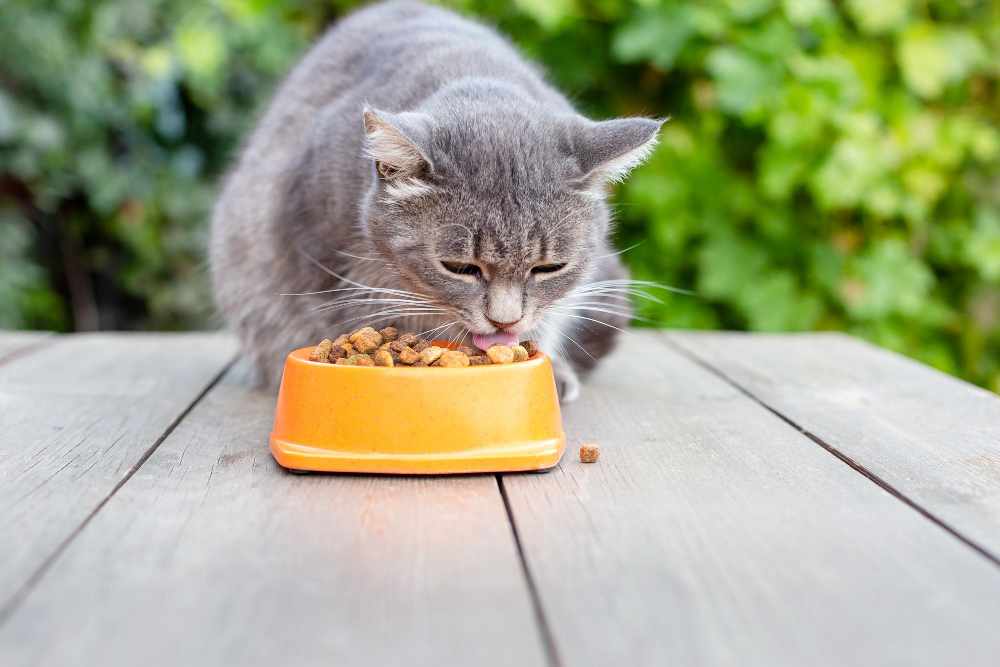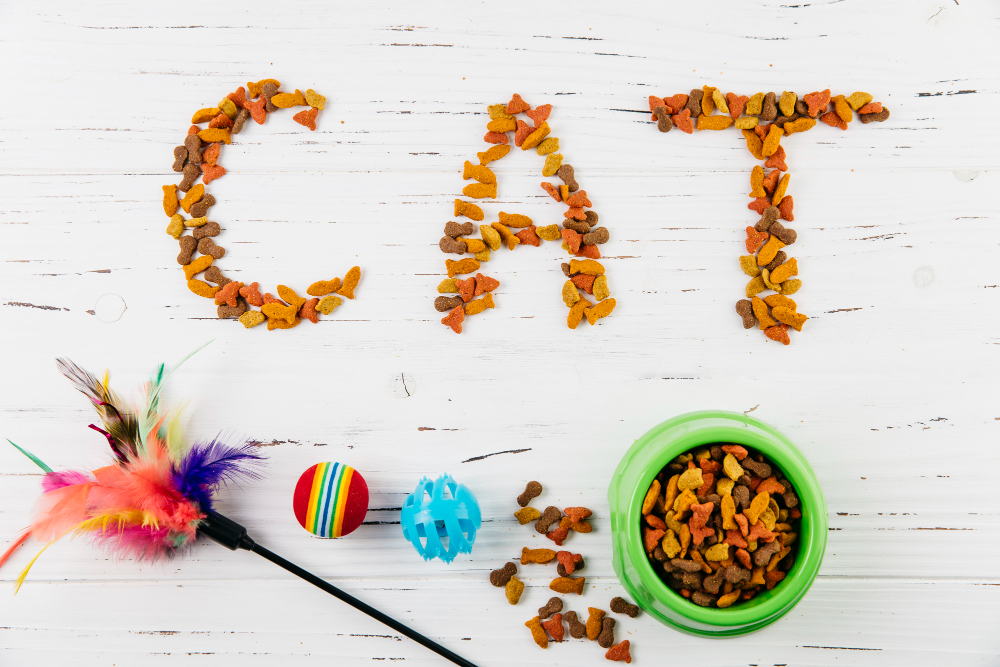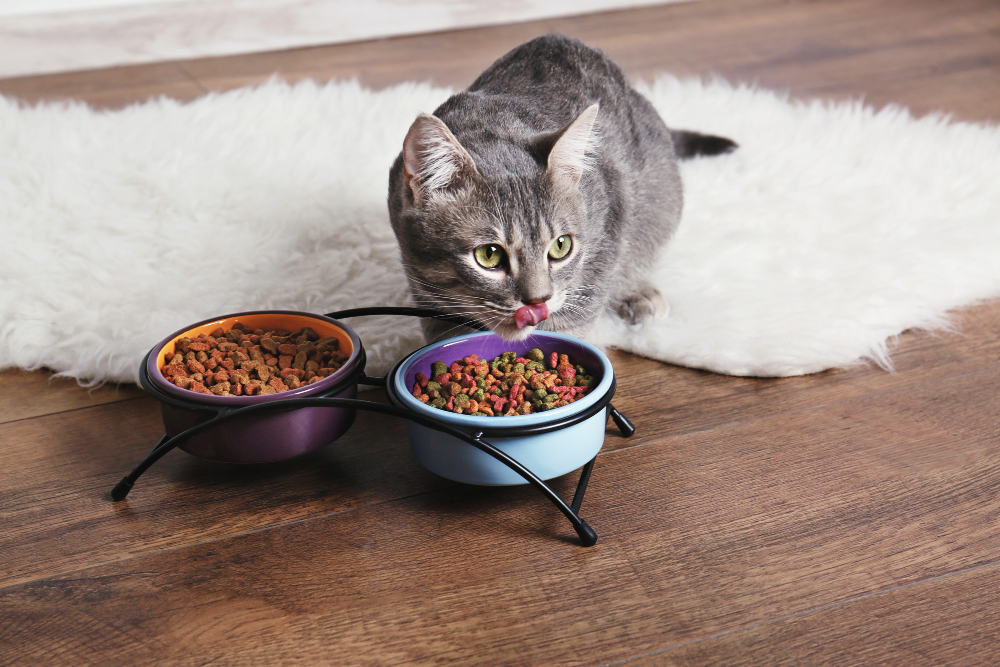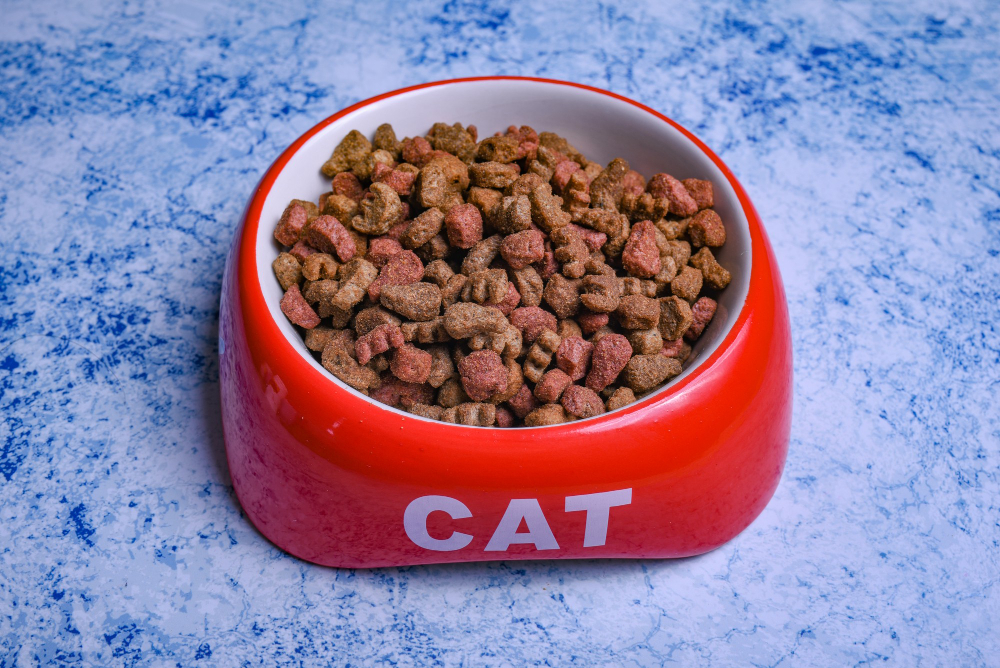Best Cat Food
Cats need a complete and balanced diet providing proteins, carbohydrates, fats, minerals, vitamins, fibre and some very specific nutrients such as taurine and essential fatty acids.
Unlike dogs, who thrive on grains and vegetables in their dog food, cats are obligate carnivores: their metabolism has evolved to need some ingredients that can only be found in meat. Though it is adequate to feed cats with home-made diet that includes meat, it makes more sense to use commercial cat food that has been formulated by companies who employ professional nutritional experts so that their products – labelled as “complete” – include everything your cat needs.
The challenge for cat parents is that there’s a huge range of products available in pet shops, at vets, and online. It can be hard to choose. The Blog aims to offer guidance on how to select the optimal diet for your feline friend.
Which are the best cat foods in 2023? At a glance.
- Whiskas Cat Food
- Sheba Cat Food
- Acana Cat Food
- Farmina Cat food
- Purina Cat food
Tips to select the best Cat Food
1. Know your Cats Nutritional Needs
The 1st tip to select the ideal Cat Food is to select one which contains the basics of Nutrition like Proteins, Amino Acids and essential Fatty Acids, Vitamins, Minerals and Carbohydrates.
Proteins
Cat are obligate carnivores (Meat Eaters) and must have meat to be healthy. Some of the vitamins and minerals outlined below, such as taurine and arachidonic acid, are only available in meat sources. Your Cat is actually a predator in evolutionary history and had a diet that largely consisted of large amounts of protein, lesser amounts of fat and a few carbohydrates.
The protein in your chosen food should be listed first and by name. If it says “chicken” or “salmon” or some other named meat, this is a good indicator of quality.
If it lists “meat by-products” or “poultry”, it would mean you are getting the less desirable parts of an animal all mixed together in that bag of food.
*Note: If you see food allergy symptoms in your cat, try switching the main protein source in their food as a first step to understand the allergy.
Amino Acids & Fatty Acids
Amino Acids are the building blocks of proteins. Two common ones are Leucine and Lysine, which help cats build and maintain muscles, bones, blood, organs, skin and coat. Younger cats can have double the energy needs of an adult cat, which requires higher protein levels.
Taurine, Arginine and Arachidonic acid are also essential in cat food. If your food has a high-quality meat in it, then these two ingredients would be in it, as these are a part of animal protein.
Vitamins & Minerals
Your food should have a balance of vitamins, minerals and amino acids. Your cat’s food should have Vitamin A, Vitamin B, Vitamin C, Vitamin B12, Folic acid, Calcium, Phosphorous, Iron, Magnesium, Sodium, Zinc.
The vitamins and minerals listed above are the building blocks of healthy joints, bones & teeth. A balanced diet means you don’t need to add supplements to your cat’s diet.
Carbohydrates
Carbs get a bad name because if consumed in excess, they have a tendency to stick around as fat. However, carbs are just as important as proteins for active kitties as they can easily metabolize carbohydrates (unlike humans).
Rice, Oats, Potatoes are a good source of Carbohydrates.
It’s worth noting that dry kibble tends to be higher in carbohydrates than wet or freeze dried or fresh food. Always check the label to see the amount of carbs per serving.
2.Feed your Cat the Right Quantity
It is very important to feed your Cat the Right Quantity of Food. If you overfeed, your cat will get fat and be more prone to health issues like cancer, heart disease, diabetes, osteoarthritis, breathing difficulties and hypertension. If you underfeed, it can result in malnutrition in your Cat.
There is a way to find out whether your Cat is of the ideal weight. The Body Condition Score is a yardstick to find out whether your Cat is underweight/overweight. The Body Condition Scale ranges from 1 to 9, with 1 indicating a Cat is severely underweight, to 9 meaning severely overweight.
Body Condition Score (BCS) Indices
The Body Condition Score (BCS) measures the weight of your Cat on a scale of 1 to 9.
BCS Score 1 to 3: This score indicates that your Cat is underweight. The common symptoms would be clearly visible ribs, spine and pelvic bones. Your Cat will have an extremely narrow waist and no visible Fat on their rib cage.
BCS Score 4 to 5: This score indicates that your Cat has the ideal weight. The common symptoms would be obvious waist, minimal amount of abdominal fat.
BCS Score 6: This score means that your Cat has an above ideal weight. The common symptoms would be ribs not visible but may be felt.
BCS Score 7 to 9: This score signifies that your Cat is overweight or obese. The common symptoms are that the ribs cannot be felt, there would be no visible waist.
3.Life Stage Is Important
Many foods state that they are “complete and balanced for all life stages.” This sounds super convenient, but may not be the best for your kitten or your elder kitty. Just like humans, cats have different nutritional requirements at different life stages, so choose food that is designed for that stage. Here is what cats need at each stage:
Kittens need food that supports their growth and should include single source protein like lamb, turkey, chicken or tuna. It should be high in protein, fat and folic acid.
Adults are less active than kittens and need less protein and fat. This is also the time when you should consider migrating to portion control feeding or timed feeding.
Senior cats (Cats which are 7 years or older) do better with foods lower in protein and fat so they don’t become overweight. Ensure they have good amounts of vitamins, minerals and nutrients to help boost their older immune system. Senior foods are designed to reducing stress on the kidneys to help older cats avoid kidney disease.
Note: As your pet transitions from kitten to adult or from adult to senior, it’s important to introduce new age-appropriate food slowly, over a week or so.
4. Mix Wet with Dry Food
Canned food contains more moisture (at least 75%) and cats love it. Kibble is super convenient and cost effective and cats also love it. You have to balance price with nutrition, so what should you do? Mix them, of course. Find a good wet cat food your cats like and add it as a topper to their kibble. How much wet food should you give your cat? That will vary, but a teaspoon in the morning and at night is a good starting place.
The benefit of doing smaller amounts of wet food is that you have less waste with cats who are grazers. Wet food does not have a long shelf life once it is out in the open air. And remember – canned food must be covered and refrigerated after it is opened so it stays fresh and safe.
Another benefit of doing smaller amounts of wet food is that you ensure your kitties ingest the moisture they need. Cats, as historic desert dwellers, do not need a lot of water. However, if they don’t get enough water, they can become dehydrated and feverish and begin throwing up. Extended lack of water leads to diabetes.
You can also add a wet topper like a spray or a bone broth to their kibble to give them extra flavour, moisture and nutrients.
One of the concerns about feeding cats only wet food is the negative impact on their teeth. Feeding both wet and dry ensures they still get the hard crunch of kibble to help clean their teeth.
Note: The nutritional analysis of a dry food is different than the nutritional analysis of a wet food. Why? The water content in the wet food skews the analysis. Read the labels on each to get a solid understanding of the nutritional value of each.
5. Learn About Grains
Grains in cat food are a controversial topic. Originally touted as a way to keep fatty carbs out of cat foods, scientists and vets are now becoming more vocal about the harm created by making cat food grain free.
Grains are an excellent source of carbohydrates, which are the building blocks of energy for your cat. However, a grain free food does not mean a carbohydrate free food.
If your cat is lazy and you want a lower carb food, check the label for the amount of carbohydrates in the food. This will be a better indicator than just choosing grain free cat food.
Some people cite food allergies in cats. While cats do have allergies to food, they are uncommon. Allergies to grains are rare. Generally, food allergies are more closely related to the protein source, like chicken or dairy.
Whole grains actually contribute valuable nutrients including vitamins, minerals, fatty acids and fibre to a cat’s diet. Some whole grains you should look for in a cat food include Quinoa, Brown Rice, Barley.
6. Know What to Avoid
It’s tempting to want to share your human food with your cat, especially since they are staring at you so intently while you eat. This brings forward a question of which Human food can be shared with cats.
List of some foods that we should not share with our Cats:
Chocolate – Chocolate is bad for cats as it can cause vomiting, diarrhoea, heart issues, muscle tremors and seizures
Milk – Milk is bad for Cats as it can cause diarrhoea, leading to dehydration
Avocados – Avocados are not good for Cats as it can cause vomiting and diarrhea in cats
Onions and Garlic – Onions and Garlic can be lethal for cats, causing their red blood cells to rupture or stop carrying oxygen efficiently.
Raisins or grapes – Raisins and Grapes can cause kidney failure
Raw eggs – Raw Eggs can cause salmonella, skin problems and food poisoning
Raw Fish – Raw Fish contains an enzyme that is toxic to kitties and can lead to
seizure and death
Bread Dough – Bread Dough contains enzymes that can create CO2 and ethyl alcohol, which gets absorbed into the blood stream and can cause seizures and respiratory failure
Tomatoes – Solanine in tomatoes can cause gastro-intestinal upset, slower heart rate and lethargy
7. Research your Brand
Where does your brand source their proteins? Where do they manufacture their food? How do they guarantee the quality of the ingredients?
Pet parents today ask a lot more questions about the ingredients in their pet’s food than previous generations did. Any brand that you feed your cat should be up-front and transparent about how they source their ingredients and manufacture their food. You should be able to see these things on a product page, the company website, and reviews of the food.
Note: Do some research on the food you give your kitties. If you can’t find information about the food, switch to a brand that is more transparent.
8. Feed Well on Any Budget
You have so many options for food for kitties: dry kibble, canned wet food, freeze dried, and raw. Dry food is convenient and shelf stable. Wet food is more expensive and has to be refrigerated after opened. Freeze dried and raw are the most expensive types of food and come with some controversies. So, how can you feed well on a budget?
As we stated earlier, mixing dry with wet is a good way to increase quality of food, taste for finicky eaters and moisture to a cat’s diet. What other ways can you balance nutrition and cost?
- Offer smaller fish, like sardines packed in water, as snacks or toppers to dry food.
- Spray pet safe fish oil on top of kibble to add omega-3s to their diet
- Pour salmon oil over their kibble to add omega-3s to their diet
- Freeze pet safe bone broth in ice cube trays. Defrost before feeding time and pour over kibble to add flavour, moisture, and nutrients
- Add freeze dried meats to their regular kibble at every meal.
- Integrate raw foods part-time. Turns out that many raw food brands are comparably priced to canned wet foods.
- Make delicious homemade cat foods
- Remember to ensure your homemade cat food has enough vitamins and minerals to keep your Cat
- Add raw meats you buy from the grocery store to their diet – these include chicken gizzards, hearts and livers, venison chunks.
9. Find Expert Guidance
Take an extra precaution and always rely on scientific and academic guidance and studies while you choose food for your Cat.
Always consult your Vet to find the best food for your Cat or when you transition your Cats Diet.
10. Read the label
Did you know that ingredients on a cat food label are listed by weight? Your animal proteins, which contain a lot of water, are likely to be listed first because all that moisture makes them heavier. When the water is removed, as is the case with kibble, the more nutrient dense ingredients are further down on the label.
Here is the order of ingredients you should see on the cat food label:
- Protein – Single source is ideal
- Organs – Liver and Lung
- Grains & vegetables – Grains.
Some terms used in Food Labels
Complete and Balanced – this means that the food has the proper amount of more than 40 nutrients essential to pet health.
Life Stage – this means that proteins, fats, carbs, and nutrients have been adjusted to meet the needs of either kittens, adults or senior cats.
Guaranteed Analysis – product information provided to regulators to ensure compliance with nutrient requirements and voluntary label claims. The GA covers the levels of protein, fat, fibre and moisture.
Ingredients – although this seems obvious, it is also meant to identify nutritional content, digestibility, tastiness (to your cat, of course) and other things like special vitamins and minerals using their fancy scientific names.








